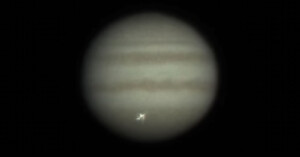
Amateur Astrophotographer Captures Rare Jupiter Explosion
An amateur astrophotographer captured a rare fireball hitting Jupiter marking one of the brightest flashes ever recorded on the planet.

An amateur astrophotographer captured a rare fireball hitting Jupiter marking one of the brightest flashes ever recorded on the planet.
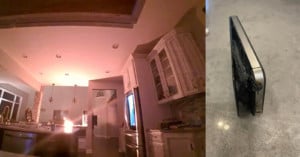
An iPhone 4 exploded and caught on fire while charging in the middle of the night as a family slept upstairs, and the alarming incident was caught on a home security camera.
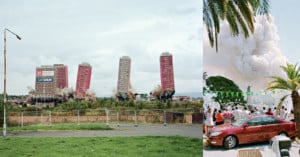
A photographer who has been capturing demolitions on large format cameras for 15 years only gets one shot to capture the one-off explosion.
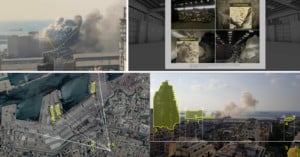
On August 4, an explostion rocked the city of Beirut, killing over 200 and injuring more than 6,500. In order to reconstruct exactly what happened, forensics researchers were able to piece together the event using photos and videos uploaded to social media.

A bride was posing for a wedding photo shoot in Beirut, Lebanon, yesterday when a massive explosion occurred in the city's port. Wedding photographer Mahmoud Nakib managed to capture the blast's shockwave on camera.
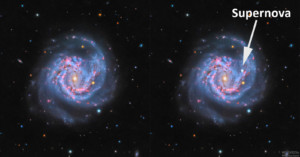
Back in February, photographer Jason Guenzel began photographing a particular galaxy in the sky on moonless nights. Then in early May, he captured something unexpected and extremely rare: a star exploding, or the birth of a supernova.
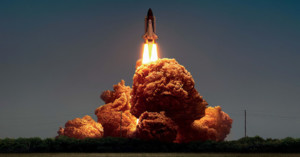
Here's something that's strange yet creative. KFC Hong Kong wanted to promote its Hot & Spicy fried chicken, so the ad agency Ogilvy & Mather Hong Kong Photoshopped pieces of fried chicken into photos to make them look like fiery explosions and smoke/vapor plumes.
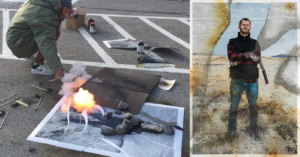
Salt Lake City-based photographer Dewey Keithly recently came up with an unusual way to edit the look of portraits: he creatively burned them by igniting gunpowder across the surface of the giant prints.
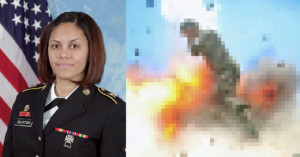
The late US Army combat photographer Spc. Hilda Clayton is being hailed as a hero this week after the Army released photos Clayton captured of the blast that killed her in Afghanistan. The photos were published with the approval of both Clayton's family and her Army unit.
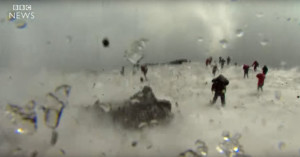
A BBC camera crew was on Mount Etna in Sicily on Thursday when the volcano suddenly erupted while cameras were rolling. The resulting footage shows the terrifying moments in which journalists and tourists fled from the explosion that rained down super hot rocks.

Here's a slow-motion video that's going viral: Nick Colvin captured an Amtrak train arriving at a station where the tracks were covered with a thick layer of snow. What results is a beautiful (and scary) white explosion.
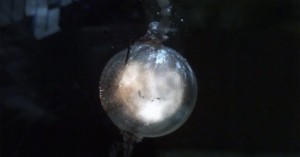
The Slow Mo Guys have captured some amazing things for their YouTube channel—including this amazing footage of glass shattering at 340,000fps—but their latest creation might be our favorite yet. Click play to see a firecracker explode underwater at a mind-bending 120,000fps.
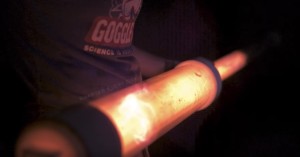
It's Friday. The perfect day to share something that's part camera-related, part science-related, and part this-is-just-plain-cool-related: a hand-held explosion captured at 20,000fps.
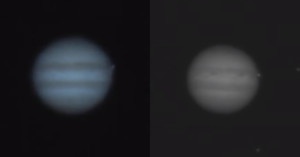
Two amateur astronomers have captured what appears to be an explosion on Jupiter that resulted from a large asteroid impacting the planet.
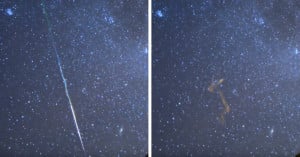
Photographer Nao Tharp of Los Angeles, California, just released this short video that shows something neat he captured on a freezing cold winter night back on December 12th, 2015. While shooting a time-lapse of the Geminid meteor shower at Red Rock Canyon State Park in California's Mojave desert, his camera caught a bright meteor explosion and a resulting orange glowing plume that lingered for about 40 minutes.
The video above shows the same explosion at different magnifications and playback speeds.
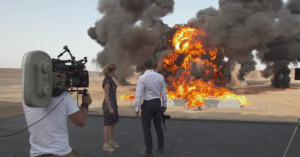
Want to set a new Guinness world record with a stunt explosion in your next photo or video shoot? You're going to have to beat the explosion in the video above.
The new James Bond movie Spectre has been awarded the Guinness World Record for "Largest Film Stunt Explosion." Rather than use CGI for the scene, the team opted for 8,418 liters of fuel and 33 kilograms of explosives.
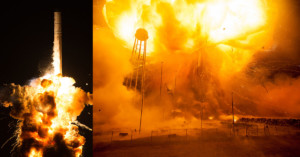
On October 28th, 2014, the Orbital ATK Antares rocket exploded on takeoff, destroying the vehicle and the supplies that were being sent to the astronauts on-board the International Space Station. The explosion was captured by a large number of photographers and videographers observing from a distance, but now NASA has published its own up-close photos of the explosion.
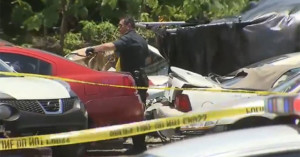
A Florida-based photographer and his model were seriously injured on Tuesday after a freak explosion during a photo shoot in a junk yard.
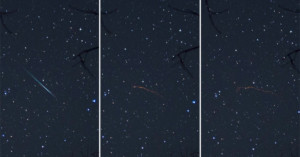
Astronomers can wait decades to see or capture what Ben Lewis photographed by accident while shooting a time-lapse Ashton-Wildwood County Park, Iowa very early this morning. Called a 'bolide fireball,' what you see in the short time-lapse above is an exceptionally bright meteorite that explodes in a bright flash at its end, leaving behind this strange bright puff of red smoke.
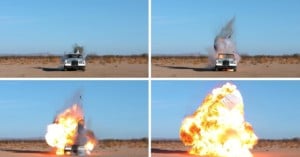
Tyler Shields is back at it again, destroying expensive stuff for shock value... we mean art... actually we're not certain what we mean. In the past, he fed a $100k Hermes handbag to an alligator. This time he’s photographing the explosive destruction a Rolls Royce Silver Shadow.
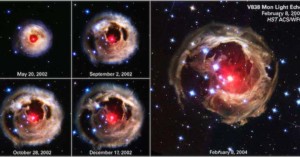
Haters can hate on the click bait words all they want, because the video above is all-but-literally mind-blowing, jaw-dropping and all the rest. Captured over the course of 4 years by the Hubble Space Telescope, it's a time-lapse that shows a very unusual star's 'light echo' rippling out through space in the most spectacular fashion.
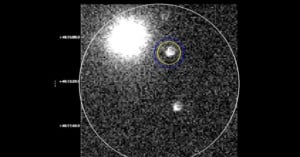
All photographs show a moment that is already gone, but the image you see above is unlike any other, because, while recently captured, it shows a cosmic explosion that took place approximately 12.1 billion years ago.
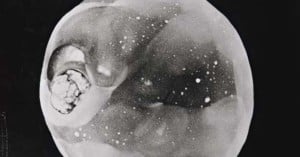
This is a photo of an atomic bomb milliseconds after detonation, shot by Harold ‘Doc’ Edgerton in 1952 through his Rapatronic (Rapid Action Electronic) Camera.
The photo was shot at night through a 10 foot lens, situated 7 miles away from the blast, atop a 75 foot tower. Edgerton systematically turned on and off magnetic fields acting as the camera’s shutter, as opposed to a conventional, mechanical close.
How fast was the magnetic field shutter? 1/100,000,000th of a second.
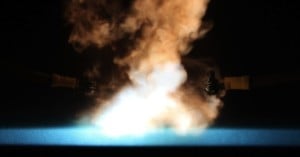
Contrary to what you might think, exploding wires are actually a fairly common photographic subject. Although cat bearding probably has it beat in terms of sheer volume, in the world of science, capturing photographs of wires turning into plasma is an often-attempted experiment.
But even though there is a lot of imagery of wires exploding out there, electrical engineer Patrick Herd's most recent experiment sought to capture the phenomenon in a unique way.

Located the Mexican state of Puebla, Popocatépetl is the second highest peak in Mexico and an active volcano -- a really active volcano. It's one of the most lively ones in the country of Mexico, with over 15 major eruptions on record since 1519 and plenty of smaller explosions through the years.
Yesterday, Popocatépetl experienced another powerful explosion as the top "popped off" to relieve the pressure within. A webcam pointed at the peak was able to capture the whole thing, and the video above shows what the explosion and resulting shockwave look like in time-lapse.
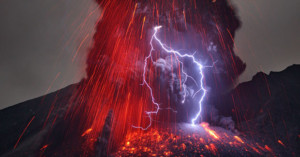
The Sakurajima volcano in southern Japan has been quite active so far in 2013, and photographer Martin Rietze recently traveled to the site to document the eruptions through photographs. His images capture smoke billowing out of the crater, lava exploding in trails of orange light, and lightning flashing back and forth inside the dark ash cloud.
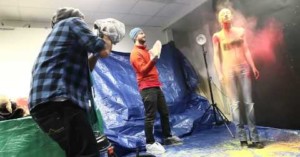
Photographer Philippe Echaroux tells us that he recently completed a photo shoot for a series he calls, "The Pigment Party". Echaroux's idea was to capture studio-lit portraits of models posing serenely amidst explosions of colorful powders. After covering the studio with tarps, hanging up a black backdrop, and setting up his lighting, Echaroux had his assistants toss pigment powders of various colors onto the model's face.
The behind-the-scenes video above offers a look at how it all went down.
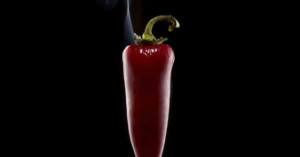
For a recent assignment for Men’s Health magazine, photographer Adam Voorhes was tasked with creating photos of chili peppers exploding.
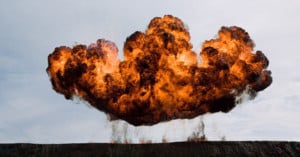
New Zealand-based photographer Geoffrey H. Short has an ongoing series titled Towards Another (Big Bang) Theory that explores "the relationship between terror and the sublime" with images of large explosions frozen in midair. Short hired film industry special effects technicians to create the "big bangs" using fossil fuel mixed with gunpowder.
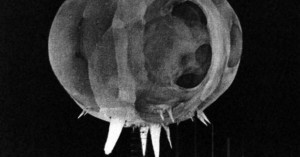
This might look like some kind of microscopic organism, but it’s actually a high-speed photograph of a nuclear explosion.